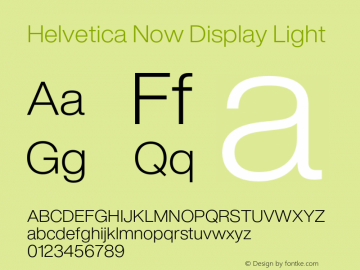
Given this domestic reception, how did Neue Haas Grotesk, under the name Helvetica, become the celebrity typeface of today? Why did it triumph over Univers? Pre-History ġ961 Typografische Monatsblätter design by Emil Ruder | Typeface: Univers The notable exception was the small coterie led by Emil Ruder, a teacher at the Allgemeine Gewerbeschule Basel, who was devoted to Univers as the best-and only-typeface to use. The great majority of Swiss designers continued to use Akzidenz Grotesk (commonly known as AG).Īkzidenz Grotesk in a Volkswagen Ad (1961) | Source This was both a matter of sales and national pride… but the attempt failed. Neue Haas Grotesk was developed by the Haas foundry in Münchenstein, Switzerland, to counteract the preference of the leading modernist Swiss designers of the postwar period for Akzidenz Grotesk-a typeface sold by H.

There were a handful of moments in Helvetica’s history that have proved to be crucial.

The first of them, eventually under the name Helvetica, emerged as the most popular.īut contrary to the implications of the eponymous 2007 movie by Gary Hustwit, this success was neither immediate nor pre-ordained. In 1957 three typefaces, all designed in the same neo-grotesque manner, were released: Neue Haas Grotesk by Eduard Hoffmann and Max Miedinger, Univers by Adrian Frutiger, and Folio by Konrad F. But suppose we apply such thinking to something more mundane: the popularity of a typeface. It has usually been applied to momentous events such as the expulsion of the Moors from Spain, the American Civil War, the two World Wars or the assassination of John F.


Speculative historical thinking, or counterfactual history, whether by historians or novelists, tries to imagine what might have happened if the outcome of a key moment in the past had been different. But how did it get there…and why didn’t Univers get the spotlight instead? Helvetica is, by all accounts, a typographic celebrity.


 0 kommentar(er)
0 kommentar(er)
